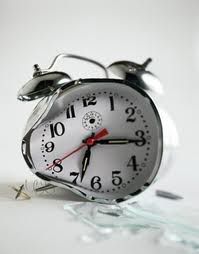After the New York Times released its exposé on the Wal-Mart bribery investigation in April 2012, a sum of $12 billion was erased from the grocery store’s market value. While the story had a significant impact on the market for Wal-Mart and Walmex, the New York Times deliberately released the story over the weekend to deter any accusations of insider trading or private access. This story gained widespread attention for its sensitive market information and prompted many discussions on the idea of selling early access to interested parties.
But this poses a controversial question: What is the purpose of a newspaper? Newspapers began as purely profit-making entities that sold any and all stories to generate revenue. A shift toward news motivated by public interest began in the 1960s and 70s due to events like Watergate that prompted newspapers to become public institutions that existed to uphold certain principles for the good of society. Today, public value of ever-present and instantaneous news has created an “entitled and expectant” environment for the print media industry that makes it difficult to implement any major frontrunner services without a substantial amount of backlash.
Critics say that offering market-moving information at a price to hedge funds and investors plays against public interest, but could there be a beneficial side to selling these facts at a fee? Publications like the Wall Street Journal and Dow Jones wire have begun to offer paid subscriptions for readers who wish to access market-moving information sooner than it is published in the newspaper or posted online. Some opponents think a move like this would be considered insider trading, while others say as long as there is no personal gain of the party disseminating the information, then it is completely legal. The court case of Dick vs. SEC 1983 established that a lack of personal benefit in trading eliminates the risk of insider trading. Neither the NYT nor Wal-Mart sources would have had any personal gain from releasing this story early to interested parties, therefore, both would be free from insider trading accusations. Continue reading

 Daily agency life often feels like an elaborate juggling act—account managers constantly juggle accounts and each account’s unique priorities and deadlines. This requires switching gears throughout the day, usually several times an hour. The necessity of this workflow is obvious—we need to be available to our clients throughout the day as projects and issues pop up, and we strive to efficiently handle projects as if each account were our only account. The KG team prides ourselves on being flexible and in our ability to nimbly manage dozens of loose ends at a time. However, it would not be a stretch to call this style of work ‘multi-tasking,’ and from
Daily agency life often feels like an elaborate juggling act—account managers constantly juggle accounts and each account’s unique priorities and deadlines. This requires switching gears throughout the day, usually several times an hour. The necessity of this workflow is obvious—we need to be available to our clients throughout the day as projects and issues pop up, and we strive to efficiently handle projects as if each account were our only account. The KG team prides ourselves on being flexible and in our ability to nimbly manage dozens of loose ends at a time. However, it would not be a stretch to call this style of work ‘multi-tasking,’ and from 